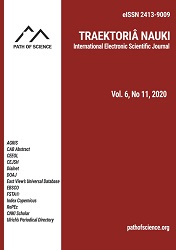Information Resources Economy in Satellite Systems based on New Microwave Polarizers with Tunable Posts
Information Resources Economy in Satellite Systems based on New Microwave Polarizers with Tunable Posts
Author(s): Stepan Piltyay, Andrew Bulashenko, Hanna Kushnir, Oleksandr BulashenkoSubject(s): Theory of Communication, Economic development, ICT Information and Communications Technologies
Published by: Altezoro, s. r. o. & Dialog
Keywords: information resources; satellite systems; circular polarization; microwave polarizer; waveguide polarizer; tunable polarizer; frequency spectrum; differential phase shift; cross-polar discrimination;
Summary/Abstract: One of the fundamental problems of modern digital telecommunications is the economy of digital information and frequency resources, which are highly limited. The introduction of novel telecommunication systems and 5G networks requires searching for principal solutions for the economy and reusing the frequency spectrum. Therefore, modern wireless mobile, terrestrial, and satellite systems use various new technologies to increase communication channels' information capacity for the economy of limited frequency resources. One of the most effective ways to reuse the information system's operating frequency band is to apply antennas with polarisation signal processing. Such systems provide the possibility to transmit and to receive simultaneously signals with different types of polarisation. Consequently, the application of electromagnetic waves with two orthogonal polarisations improves wireless systems' information characteristics for various purposes. This allows doubling the information capacity of mobile, terrestrial, and satellite communication channels. Also, polarisation processing is carried out in meteorological and radar systems to receive, transmit, and process information. The essential elements of such systems are microwave polarisers and orthomode transducers. The electromagnetic characteristics of these devices affect the aspects of the whole system significantly. Main electromagnetic factors include phase, matching, and polarisation parameters. The article presents the development of a compact tunable polarizer based on a square waveguide with three posts. The developed polariser operates in the X-band from 8.0 GHz to 8.5 GHz. Created a mathematical model of the polariser is based on the scattering and transmission matrices. To verify the developed theoretical model's correctness, the calculation of all characteristics was also performed numerically using the finite integration technique. The developed compact polariser based on a square waveguide with three posts allows tuning it's matching and polarisation characteristics by changing all posts' heights. The developed polariser's main advantages are small dimensions, tuning options, and aspects of polarisation transformation.
Journal: Traektoriâ Nauki
- Issue Year: 6/2020
- Issue No: 11
- Page Range: 5001-5010
- Page Count: 10
- Language: English

